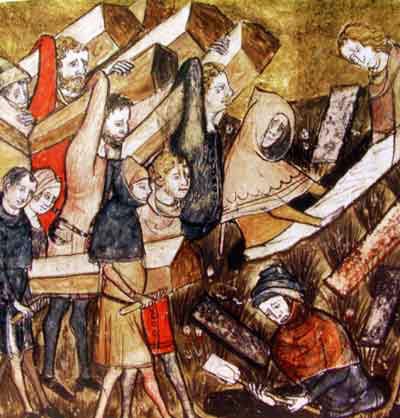- Trending:
- Pope Leo Xiv
- |
- Israel
- |
- Trump
- |
- Social Justice
- |
- Peace
- |
- Love

RELIGION LIBRARY
Shia Islam
Founders
While, according to its own understanding, Shiism begins with the beginning of mankind, and while Shiites share with other Muslims the high regard and exceptional position of Muhammad, a number of other figures have contributed to the formation of Shiism and its traditions. Ali and his son Husayn, both of whom also enjoy the veneration of Sunnis, occupy a special place in Shiism. While Shiism has a tradition of vilifying the first three caliphs or at least Uthman, Sunnis sometimes blame the fourth caliph and Husayn for the schism of the Islamic community. The main targets of Sunni polemics are 'extreme' Shiites and later political leaders who are venerated exclusively by the Shiites.
The failure of the early Muslim community to follow the wish of Muhammad as many perceived it and accept Ali as the Prophet's successor was only the first defining event for Shiism. The second was the tragedy of Karbala and the martyrdom of Muhammad's grandson, Husayn.
When Yazid succeeded his father Muawiya as the Umayyad caliph, Husayn withdrew to Mecca, but was later convinced by anti-Umayyad rebels in Kufa to join them. While marching with a small group that included his wives and children from Mecca, Husayn was stopped by Umayyad forces at Karbala. In the ensuing battle, Husayn and his supporters, hopelessly outnumbered and without support from Kufa, were slaughtered. The women and children were led as captives to Damascus; the heads of the slain men were brought with them.
The violent death of the Prophet's grandson was disturbing for all Muslims, even if they were not partisans of Ali's cause. In the Shiite tradition, the tragedy of Karbala also outweighs the murder of Ali, who, after all, was not a descendant of Muhammad and who was killed by a member of a small minority rather than the usurper king.
One should distinguish between the foundation of Shiism as a distinct branch and the articulation of the principles that eventually defined it. In addition to the model of Muhammad as preserved in the hadiths, which is consulted in particular by Sunnis, Shiites cite Nahj al-balagha ('The Way of Eloquence'), a collection of letters, sermons, and sayings attributed to Ali that is also considered an ideal use of classical Arabic. The authenticity of the reports is highly controversial; Nahj al-balagha can only be traced back to the 11th century.
Even though Ali and Husayn were crucial to the emergence of Shiism as a political movement, and veneration for them differentiates Shiism until the present day, later historical figures also deserve to be included under the category of founders. The contributions of certain legal scholars and theologians turned Shiism into a comprehensive interpretation of Islam and mutually exclusive from Sunnism. Key to this development was also the idea of the Imams, a line of superior religious leaders that was eventually interrupted.
A crucial figure in this context was Jafar al-Sadiq (d. 765), the sixth imam of the Twelver Shiites. During his lifetime, he was probably simply a religious authority respected by Muslims of different religio-political tendencies. The fact that this scholar had (proto-) Sunni disciples suggests that he may not even have committed to a sectarian view. The pivotal role of Jafar al-Sadiq—not least because of the role assigned to him by contemporary and later Shiites—has been pointed out by historian Marshall Hodgson (1922-1968) and elaborated by later scholars. Hodgson identified three distinctive developments among Shiites at the time of Jafar al-Sadiq that led to the formation of Shiism as a sect.
The first one was the idea of personal designation (Arabic: nass) of an Imam by his predecessor, as Muhammad had appointed Ali. As is obvious from the emergence of different Islamic sects as well as from political conflicts, principles of succession were frequently a bone of contention. Much of the anti-Umayyad propaganda focused on the fact that when the first Umayyad caliph, Muawiya, supposedly appointed his son, Yazid, they were establishing a dynasty of kings. Some of the political conflicts within dynasties—such as the Abbasids or the Buyids—were partly rooted in the multiple possibilities of succession within a family. These contested principles of succession also determined some of the differences among the early Shiites. While some leaders of rebellions, among whom one can include the Abbasids, were rather remotely connected to Muhammad, Jafar al-Sadiq was distinguished both by his indirect relationship to Muhammad via Ali, from whom he was descended, and a direct relationship via the female line of Fatima (Muhammad's daughter, and Ali's wife). The establishment of the formal designation of successors granted Shiites continuity over time and as a religious community, independent of their political fortunes.
The second factor that, according to Hodgson, contributed to the development of Shiism as a separate branch was the focus on knowledge and the Imams as religious authorities, which made them independent of political success and allowed them to maintain their position as quietists, i.e., political neutrals. The third aspect was the establishment of doctrinal boundaries, which led to the exclusion of the more extreme views later associated with the ghulat. This prevented Shiism from turning into a marginal movement. Yet, according to Hodgson, many ideas of these more radical followers of Ali eventually determined Shiite religious thought.
Minority branches of Shiism have their own founding figures. While the early missionaries and Imams of the Ismaili Fatimids may have been crucial for the establishment of the first Shiite state, the legal scholar al-Qadi al-Numan (d. 974), for example, developed many of the underlying intellectual principles.
Study Questions:
1. Explain the important of Husayn in the development of Shiite thought.
2. Who are the Imams?
3. What is the importance of Jafar al-Sadiq?










